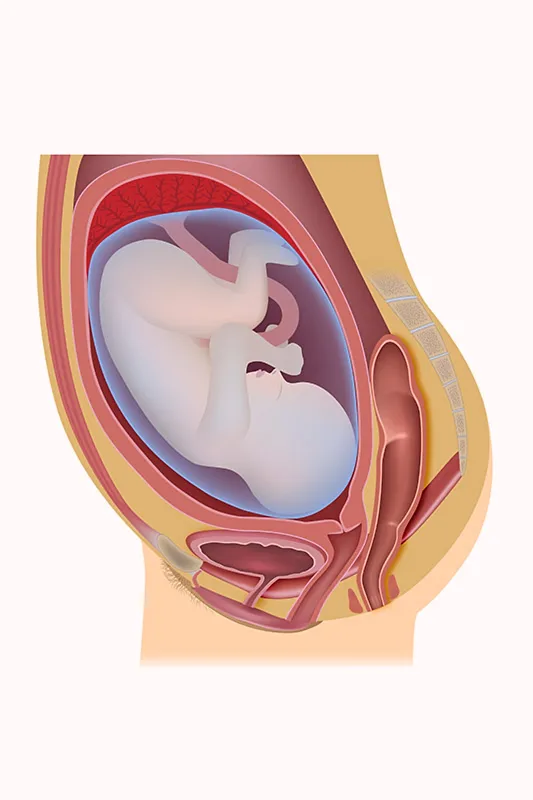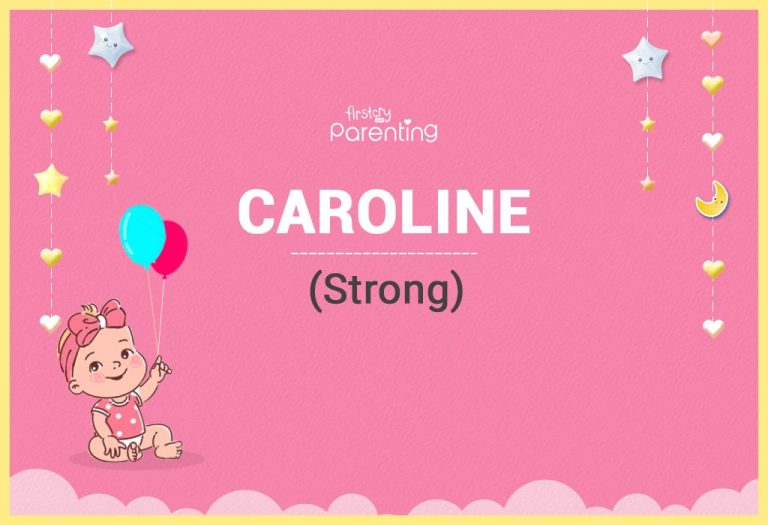Full-Term Pregnancy: What It Is and Why 39 Weeks Matters
If you’re pregnant, other than being excited, you must also be nervous and confused, which is expected. Your baby’s well-being is your topmost priority, and you must be doing all things possible to ensure just that. Reaching a full-term pregnancy is believed to help in the maximum development of the baby, and you may want to reach full-term for your baby’s good health and a smooth, healthy delivery. But most moms-to-be have different ideas about full-term pregnancy, and it’s essential to have the right information. Understanding what full-term really means can help you prepare better and make informed decisions. Now, if you’ve just got the ‘good news,’ the information about full-term pregnancy in this article will help you understand everything you need to know about full-term pregnancy, from its importance to what you can do to ensure a safe journey for both you and your baby!
What Is Considered a Full-Term Pregnancy
Wondering how many weeks is a full-term pregnancy? A full-term pregnancy is one that completes 39 weeks. During medical emergencies, doctors may opt for early delivery, but delivering the baby in the 39th week of pregnancy is the best possible scenario under normal circumstances. Until a few years ago, a pregnancy completing 37 weeks was considered to be full-term, however, according to the statement by the American College of Obstetricians and Gynecologists (ACOG) in 2013, it was concluded that pregnancy is full-term at 39 weeks (1).
What Are the Different Pregnancy Terms?
Depending upon the duration the gestation period lasts for, pregnancy terms can be categorised as follows (2):
1. Early-term
This is referred to as pregnancy age and is between 37 weeks 0 days and 38 weeks 6 days.
2. Full-term
A pregnancy that lasts between 39 weeks 0 days and 40 weeks 6 days is considered to be a full-term pregnancy.
3. Late-term
When the gestation period lasts between 41 weeks 0 days and 41 weeks 6 days, it is considered as late-term.
4. Post-term
A pregnancy that lasts 42 weeks 0 days and beyond is termed to be post-term.
At 39 weeks, the baby will have attained normal growth making it a full-term pregnancy and is the optimal time for delivery.
Benefits of a Full-Term Pregnancy
A full-term pregnancy, which lasts around 39 to 40 weeks, allows your baby to develop fully before birth. Here are some key benefits of carrying your pregnancy to full term (3).
- Optimal Brain Development: The brain undergoes significant growth during the last few weeks of pregnancy, helping with cognitive and motor skill development. Babies born at full-term have a lower risk of developmental delays.
- Stronger Lungs and Better Breathing: Babies’ lungs mature fully in the final weeks, reducing the chances of respiratory distress syndrome and other breathing difficulties at birth.
- Better Weight and Body Temperature Regulation: Full-term babies have more fat stores, which helps them maintain body temperature and reduce the risk of complications like hypothermia.
- Improved Feeding and Digestion: A baby’s digestive system develops more in the last few weeks, making it easier for them to suck, swallow, and digest breast milk or formula properly.
- Lower Risk of Health Complications: Full-term babies are less likely to face infections, jaundice, and other medical concerns that are more common in preterm infants.
Why Is 39 Weeks Considered Full-Term?
As per research, babies born at 39-40 weeks were less susceptible to health issues than those born at 37 weeks. Babies born at 39 weeks have more time for their brain, liver, and lungs to develop than babies who are born at 37 or 38 weeks. These babies may also have a healthy weight, fewer vision problems, and may also be able to suck and swallow better at birth (4).
Baby’s Development at Full-Term Pregnancy
Starting from 37 weeks, a baby’s different body parts start maturing to achieve full growth. The digestive system starts forming meconium, which later transforms into baby’s first excreta after birth.
The baby’s head starts moving towards the pelvis of the mother. In medical terms, this position is known, as ‘engaged’. In certain cases, this position occurs only after labour. Up until this time, the baby is covered in lanugo (the first few hair produced by baby’s hair follicles), but at 39 weeks, or when pregnancy reaches its full term, it goes away. Yet, there are some babies who may have patches of it even after birth. The baby’s genitals also look swollen at birth and this happens due to the hormonal level changes in the mother’s body, but they soon attain its normal size.
Changes in the Mother’s Body at 39 to 40 Weeks
When the pregnancy reaches its 39th week, the uterus muscles begin to tense and the mom-to-be may also experience false indications of labour. This condition is known as Braxton Hicks. Whatever changes you feel, inform your doctor about the same.
The baby starts moving into the pelvic area leading to discomfort in the region and you may also experience sharp stab like sensation in the region when this occurs. This poking feeling is usually a result of the baby turning its head.
Vaginal discharge in the form of white mucus sometimes with a tinge of blood also occurs at this stage (5).
Is it Ok if the Baby Stays in the Womb for as Long as Possible?
If the baby is in the womb past the full-term, the term may get extended by a week, but the baby should not remain in the womb for longer than that. Babies should be born at full-term, anything before or after is certainly not healthy and in some cases, it can affect the baby’s health.
What if I Have an Early Term Pregnancy?
An early term pregnancy is when the baby is born at 37 weeks, before reaching the full-term. Research has shown that babies born at an early term could be physiologically immature (6). Early term babies may also be at the risk of many diseases, especially ones related to immunity, such as wheezing, asthma and more. They may also be at the risk of developing gastrointestinal disorders.
Is It Risky to Have a Late-Term Pregnancy?
Having a late-term pregnancy can be risky for both the infant and the mother. In babies, it could lead to breathing problems, sudden halt in growth, slow heart rate and more. The amniotic fluid starts decreasing which means it could be even fatal for the baby. Stillbirth too can occur in some cases. Also, since the baby tends to be heavy during late-term, there could be complications in the delivery process as well, and it could lead to a C-section.
What Are the Risks Associated With Post-term Pregnancy?
In post-term pregnancy, the baby is not delivered until after 42 weeks, that is, three weeks after the medically accepted full-term (i.e., 39 weeks). A post-term pregnancy can mean health complications for both mother and the baby.
Some risks associated with post-term pregnancy are explained below (7).
- The Baby Might Be Overweight: Post-term babies tend to be over 8 pounds. Medically this condition is known as fetal macrosomia which can lead to obesity and diabetes in the future. Overweight babies are also a health risk to the mother as the body size could cause uterine ruptures during delivery and also result in lacerations in the genital tract. This will also mean heavy bleeding.
- Less Availability of Oxygen to the Baby: By the time pregnancy reaches its full-term, the placenta that delivers oxygen and nutrition to the baby would have attained its maximum size and after that its ability to function normally reduces. This means that the baby may not get enough oxygen required for their health, which can lead to severe birth disorders such as cerebral palsy.
- Meconium Aspiration: A post-term pregnancy can also lead to a condition called meconium aspiration, in which the baby breathes in the amniotic fluid which causes oxygen deficiency and leads to lung disorders in the infant.
For mothers, there could be a range of health complications such as infection, postpartum haemorrhage, C-section and even perineum injuries.
Why Are the Last Few Weeks Important?
The final weeks of pregnancy are crucial for the complete development of your baby. Here’s why these last few weeks are so significant.
- Brain Development: The brain grows rapidly during the last trimester, forming vital connections that support learning, memory, and other cognitive functions in the first few years of life.
- Lung Maturity: Lungs mature in the final weeks, producing surfactant that enables your baby to breathe easily once born and lowers the risk of respiratory problems after birth.
- Weight Gain: In these final weeks, your baby gains weight rapidly, which helps with maintaining body temperature and developing strength for feeding and movement.
- Immune System Strengthening: The baby receives essential antibodies during the last few weeks that help build their immune system, offering protection against infections after birth.
- Organ Finalization: The last weeks of pregnancy allow vital organs like the kidneys, liver, and digestive system to fully mature, ensuring the baby is ready to function independently outside the womb.
When Is a Twin Pregnancy Considered a Full Term?
What is full term for twins? A twin pregnancy is typically considered full-term at 37 weeks, unlike a single pregnancy, which reaches full-term at 39 to 40 weeks (8). Due to the increased risk of preterm birth in twin pregnancies, many twins are born earlier than 37 weeks. However, babies born at 37 weeks are generally considered to be well-developed and have a lower risk of complications. Healthcare providers may adjust the timeline for delivery based on the health and growth of both the babies and the mother, with some pregnancies extending beyond 37 weeks if there are no complications. It’s crucial for expectant mothers of twins to work closely with their healthcare provider to ensure the best outcome for both babies.
When to Call to Your Doctor
Knowing when to call your doctor during pregnancy is essential for your health and the well-being of your baby. It’s always better to be cautious and reach out if you’re experiencing any concerns or unusual symptoms like the ones below:
- Severe or persistent abdominal pain
- Heavy bleeding or spotting
- Sudden swelling in the face or hands
- Severe headache that doesn’t go away
- Decreased fetal movement
- Frequent and painful contractions before 37 weeks
FAQs
1. Is it possible to deliver at full-term but with a low birth weight?
Yes, a baby can be born at full-term (37 weeks or more) but still have a low birth weight due to factors like poor nutrition, maternal health issues, or genetic factors.
2. Can full-term pregnancy lead to a longer labor?
While many women have a typical labor duration at full term, some may experience longer labor, especially with their first pregnancy or if there are complications like a breech baby.
3. Can a baby be born at full-term and still need NICU care?
Yes, full-term babies can require NICU care for various reasons, such as infections, breathing issues, or jaundice, even though they were delivered at 37 weeks or later.
From the above, you must have understood how the full-term pregnancy weeks typically range from 37 to 40 weeks. A full-term pregnancy is best for the baby and the mother. Unless there are any medical complications, it is best to go for a full-term pregnancy!
References/Resources:
1. Definition of Term Pregnancy; American College of Obstetricians and Gynecologists Clinical; https://www.acog.org/clinical/clinical-guidance/committee-opinion/articles/2013/11/definition-of-term-pregnancy
2. Know Your Terms; NIH; https://www.nichd.nih.gov/ncmhep/initiatives/know-your-terms/moms
3. Go the Full 40: Why Take Your Baby to Term; Northwestern Medicine; https://www.nm.org/healthbeat/healthy-tips/go-the-full-40
4. Razaz. N, Muraca. G, Fink. K, Boutin. A, et al.; Time of delivery among low‐risk women at 37–42 weeks of gestation and risks of stillbirth and infant mortality, and long‐term neurological morbidity (Paediatric and Perinatal Epidemiology); National Library of Medicine; https://pmc.ncbi.nlm.nih.gov/articles/PMC9314589/; March 2022
5. Week 39; NHS; https://www.nhs.uk/start-for-life/pregnancy/week-by-week-guide-to-pregnancy/3rd-trimester/week-39/
6. Parikh. L, Reddy. U, Männistö. T, Mendola. P, et al.; Neonatal Outcomes in Early Term Birth (American Journal of Obstetrics & Gynecology); National Library of Medicine; https://pmc.ncbi.nlm.nih.gov/articles/PMC4149822/; September 2015
7. Postterm Pregnancy; University of Rochester Medical Center; https://www.urmc.rochester.edu/encyclopedia/content?ContentTypeID=90&ContentID=P02487
8. Twin Pregnancy; Cleveland Clinic; https://my.clevelandclinic.org/health/articles/23158-twin-pregnancy
Also Read:
Abdominal Pregnancy
Heterotopic Pregnancy
Types of Twin Pregnancy
List of 10 Different Kinds of Pregnancy
Was This Article Helpful?
Parenting is a huge responsibility, for you as a caregiver, but also for us as a parenting content platform. We understand that and take our responsibility of creating credible content seriously. FirstCry Parenting articles are written and published only after extensive research using factually sound references to deliver quality content that is accurate, validated by experts, and completely reliable. To understand how we go about creating content that is credible, read our editorial policy here.























